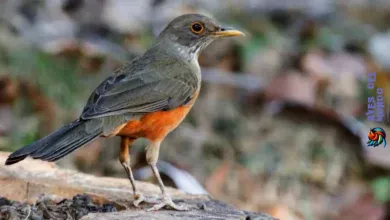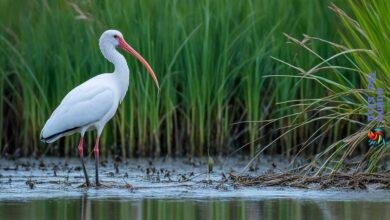Did you know that the Mandarin Duck is widely regarded as one of the most beautiful ducks in the world? Its vibrant plumage and graceful appearance have captivated bird enthusiasts and nature lovers alike. From its stunning colors to its unique behavior, there is much to discover about this remarkable species.
If you’re intrigued by the Mandarin Duck’s beauty and want to delve deeper into its fascinating world, this article will provide you with insights into its appearance, behavior, habitat, symbolism, and more. So, let’s embark on a journey to explore the wonders of the Mandarin Duck.
Throughout this article, we will uncover Mandarin Duck facts, delve into its behavior and habitat, and uncover the symbolic significance it holds in various cultures. We will also touch upon the conservation status of this species and its adaptability to urban environments. Whether you are an avid bird enthusiast or simply curious about the natural world, this comprehensive guide will satiate your curiosity about the Mandarin Duck.
Appearance of The Mandarin Duck
The Mandarin Duck is widely recognized for its stunning appearance, characterized by its vibrant plumage and unique features. Let’s explore the distinctive attributes that make the Mandarin Duck a truly remarkable and visually captivating bird.
Mandarin Duck Plumage
The male Mandarin Duck boasts an exquisite range of colors in its plumage, showcasing a mesmerizing blend of green, red, beige, black, and white feathers. This kaleidoscope of hues creates a striking display of natural beauty, attracting attention and admiration wherever these ducks are found. In contrast, the female Mandarin Duck exhibits a more understated plumage with gray-beige tones, adorned with charming spots of dark brown and white.
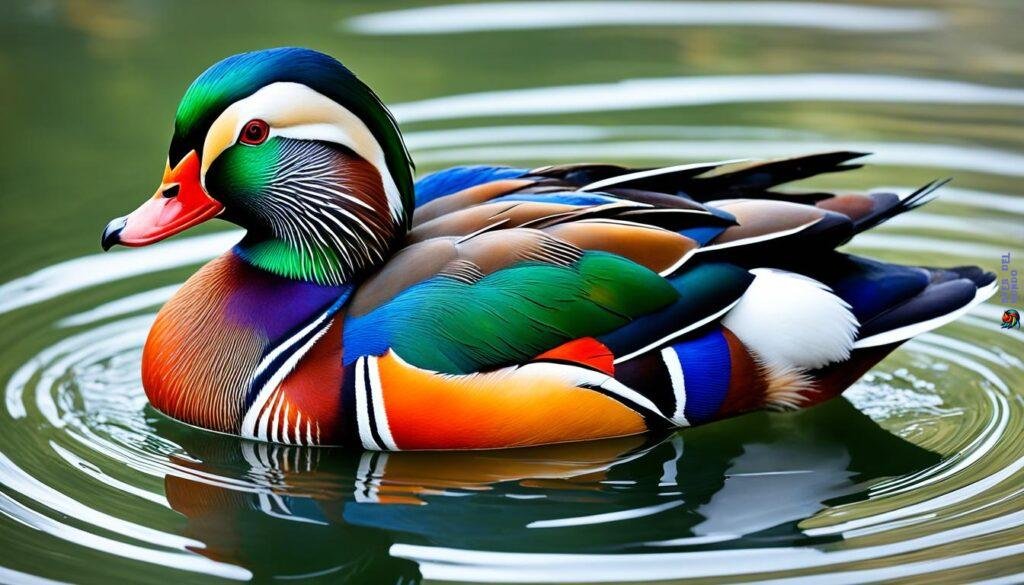
Mandarin Duck Beak and Legs
The Mandarin Duck is distinguished by its distinct red beak, which adds a vibrant splash of color to its overall appearance. The bold red hue of the beak complements the striking plumage, creating a harmonious and visually appealing ensemble. Additionally, the Mandarin Duck’s legs are bright orange, further enhancing its captivating aesthetic presence.
Mandarin Duck Wings and Tail
The wings of both male and female Mandarin Ducks feature a harmonious combination of brown and orange hues. These intricately patterned wings contribute to the overall elegance and beauty of the bird. Furthermore, the Mandarin Duck possesses a long, black tail that gracefully flows behind them, amplifying their graceful and regal demeanor.
«The Mandarin Duck’s plumage and unique features create a breathtaking sight, showcasing nature’s artistry at its finest.»
The combination of vibrant plumage, striking beak and legs, intricately patterned wings, and the beautiful long tail make the Mandarin Duck a true marvel of nature. The visual appeal of these ducks never fails to capture the admiration and awe of both bird enthusiasts and casual observers alike.
Habitat and Distribution of The Mandarin Duck
The Mandarin Duck, native to East Asia, can be found in regions such as Russia, China, and Japan. These birds thrive in habitats characterized by lakes, wetlands, and waterways that are surrounded by dense shrub vegetation. These areas provide the perfect environment and resources for the Mandarin Ducks to thrive.

However, the Mandarin Duck’s presence is not limited to its native range. This beautiful species has been introduced to Europe, particularly in the United Kingdom. Over time, they have successfully established populations in various parks and gardens across the country. Additionally, other European countries such as Belgium, the Netherlands, Italy, and Switzerland are also home to Mandarin Duck populations.
If we take a closer look at the introductions in the UK, we can see how the Mandarin Duck has adapted to urban environments. These ducks can be found in parks, gardens, and other green spaces within cities, where they have easy access to waterways and suitable foraging grounds. Their presence in urban areas brings joy to residents and visitors, who can appreciate the stunning beauty of these remarkable birds.
Behavior of The Mandarin Duck
The Mandarin Duck is known for its gregarious behavior, often living in large groups and coexisting peacefully with other bird species. This social nature is one of the fascinating aspects of Mandarin Duck behavior, as it enables them to form strong social bonds and thrive in a communal environment.
During the breeding season, male Mandarin Ducks engage in elaborate courtship displays to attract females. These displays are a spectacular sight to behold, where the males puff up their feathers, showcase their vibrant colors, and perform graceful dances on the water. These mesmerizing mating displays serve as a way of attracting mates and establishing dominance among competing males.
Foraging is another essential behavior of the Mandarin Duck. These ducks actively search for plant species, insects, fish, and small snails to meet their dietary needs. They are particularly skilled at finding food in aquatic environments, using their webbed feet to navigate and dive underwater to search for prey.
The following table highlights the key behaviors observed in Mandarin Ducks:
| Behavior | Description |
|---|---|
| Gregarious Nature | Mandarin Ducks live in large groups, coexisting peacefully with other bird species. |
| Mating Displays | During the breeding season, male Mandarin Ducks engage in elaborate courtship displays to attract females, showcasing their vibrant colors and graceful movements. |
| Foraging Behavior | Mandarin Ducks actively search for plant species, insects, fish, and small snails to meet their dietary needs. |
The behavior of the Mandarin Duck is a testament to its adaptability and ability to thrive in various ecological settings. Whether it’s their gregarious nature, mesmerizing mating displays, or resourceful foraging behavior, these ducks never fail to captivate observers with their fascinating behaviors.
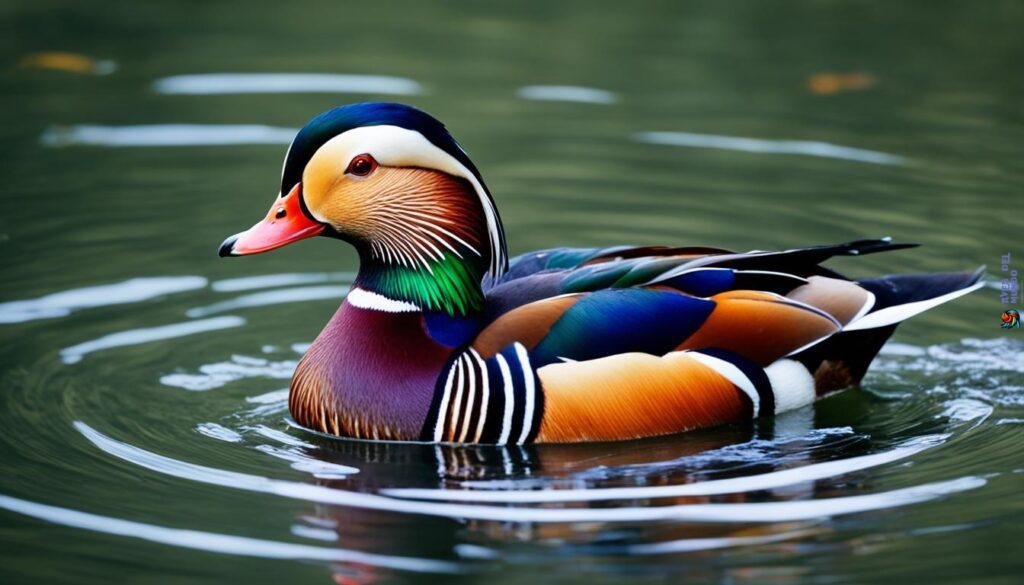
Reproduction and Parental Care of The Mandarin Duck
During the breeding season, male Mandarin Ducks engage in elaborate courtship displays to attract females. Through a series of intricate movements and vocalizations, the males showcase their vibrant plumage and graceful presence, captivating the attention of potential mates.
Once a pair has formed, the breeding process begins. With painstaking dedication, the female Mandarin Duck selects a suitable location to lay her clutch of eggs. She often chooses the hollows of trees near the water’s edge, creating a safe and protected nesting site.
The female diligently incubates the eggs alone, taking on the responsibility of ensuring their warmth and safety. This incubation period lasts for approximately 28 to 30 days, during which the female rarely leaves the nest, tirelessly tending to her precious eggs.
After the incubation period, the adorable ducklings emerge from their shells. They already possess open eyes and feathers, displaying their remarkable resilience from the moment of birth. Within a few days, the ducklings are capable of feeding themselves, employing their instinctive foraging behaviors.
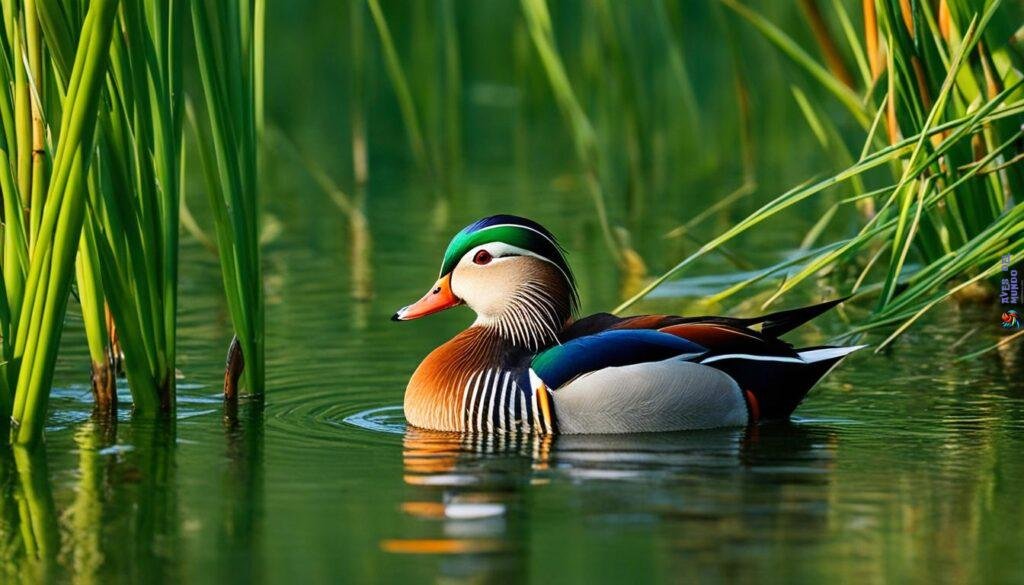
Under the watchful eyes of both parents, the female leads the ducklings to the nearest body of water. This journey marks their transition to aquatic life, where they can thrive and explore their surroundings. Throughout this critical period, both male and female Mandarin Ducks provide protection and care to ensure the survival and development of their offspring.
As the ducklings grow and gain independence, they gradually venture out into their vibrant habitat, guided by the teachings of their parents. This cycle of reproduction and parental care showcases the extraordinary instincts and nurturing characteristics of these magnificent ducks.
Symbolism of The Mandarin Duck
The Mandarin Duck holds significant symbolism in many cultures. In Chinese culture, the Mandarin Duck symbolizes love, fidelity, and happiness in marriage. They are often depicted in artwork and are considered a symbol of enduring love and a happy married life.
The ducks are also associated with rebirth and new beginnings in Japanese culture. Their striking plumage and graceful presence make them a popular subject in various forms of art and traditional symbolism.
«The Mandarin Duck has long been revered as a symbol of love and romantic partnership in Chinese culture. It is believed that these ducks form strong lifelong bonds, much like the ideal relationship between spouses. This symbolism has made them a cherished emblem in traditional Chinese weddings and a popular gift for newlyweds.»
Across different societies, the Mandarin Duck’s vibrant colors and elegant behavior have captured the imagination of artists and poets, serving as inspiration for countless creative works. It is often associated with grace, beauty, and the harmony of nature.
Below is an image showcasing the radiant plumage of a male Mandarin Duck:
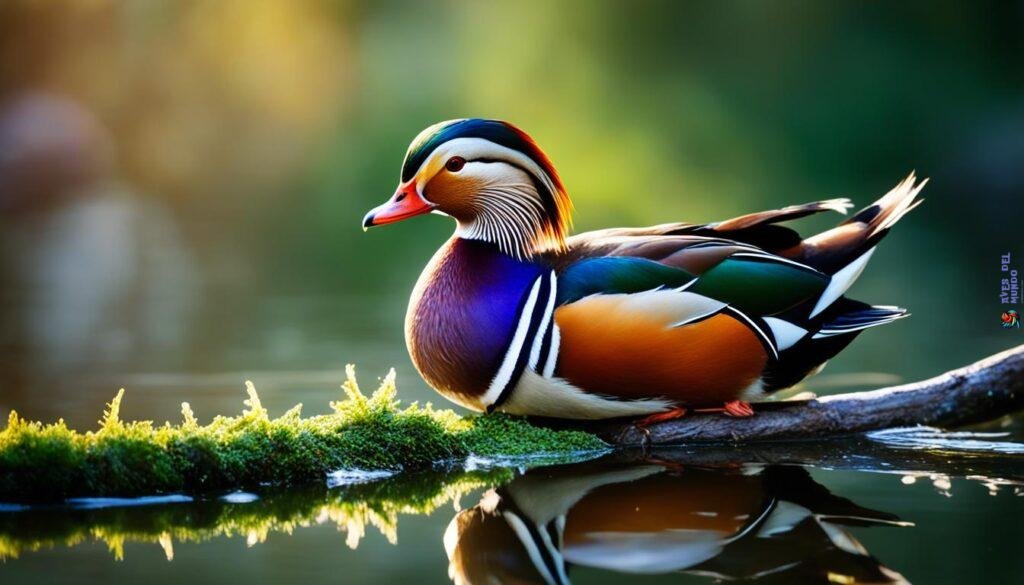 |
Conservation Status of The Mandarin Duck
The Mandarin Duck, with its breathtaking beauty and enchanting presence, is not just a marvel to behold but also a species in need of conservation efforts. The delicate balance of its natural habitat is under threat, primarily due to habitat loss caused by deforestation and urbanization. As human activities continue to encroach upon the pristine forests and wetlands that the Mandarin Duck calls home, the population of this majestic bird faces a steady decline.
Large-scale exports and the destruction of forest habitats have significantly contributed to the decline in Mandarin Duck populations, particularly in eastern Russia and China. The loss of their preferred habitat, which includes dense shrub vegetation near waterways, has a direct impact on their ability to breed and thrive. The consequences of habitat loss are further exacerbated by the pollution and degradation of the remaining water bodies.
Despite these challenges, there is hope for the Mandarin Duck’s survival. One contributing factor to its continued existence is the lack of desire for its meat in the human diet. This has helped to shield the species from overexploitation and provides a glimmer of hope for its long-term sustainability.
In its native Asian range, the Mandarin Duck is currently classified as «Least Concern» on the IUCN Red List. However, it is essential to recognize the need for proactive conservation efforts to ensure the preservation of this magnificent bird. Preserving and restoring its natural habitat is of utmost importance, along with the implementation of sustainable practices to mitigate further habitat loss and degradation.
Efforts are underway to raise awareness about the conservation status of the Mandarin Duck and the importance of protecting its habitat. Collaborative initiatives between government agencies, conservation organizations, and local communities are crucial in safeguarding the future of this species. By working together, we can contribute to the preservation of the Mandarin Duck and secure its place in the world’s vibrant biodiversity.
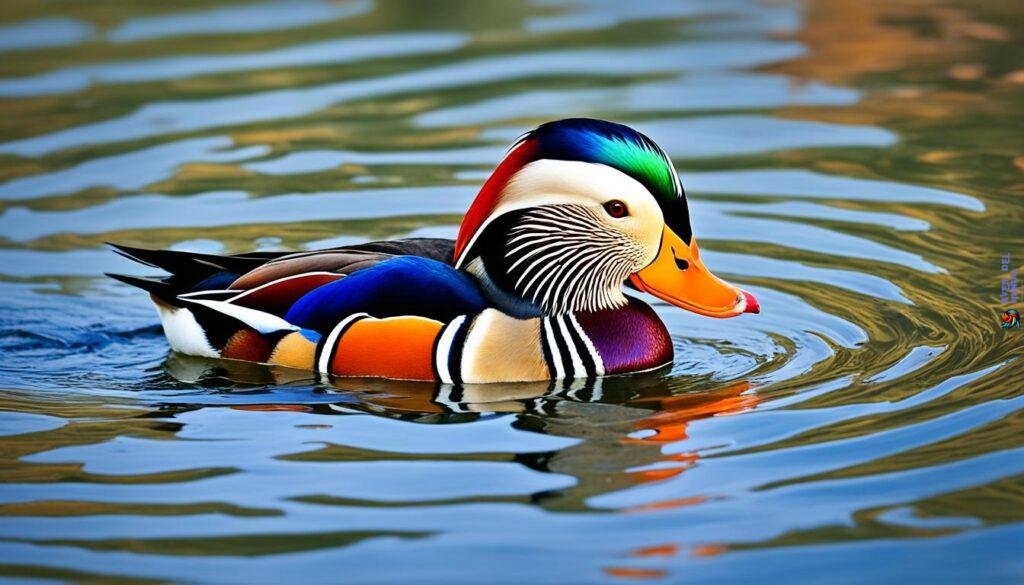
The Importance of Mandarin Duck Conservation Efforts
Mandarin Duck conservation is not just about preserving the beauty of this remarkable bird; it extends to the broader ecosystem. The Mandarin Duck plays a vital role in maintaining the balance of aquatic ecosystems by controlling populations of insects, small fish, and snails. The loss of this species could have cascading effects on the overall health of the habitats it occupies.
«Conservation is a collaborative effort that depends on the collective actions of individuals, communities, and governments. By acknowledging the importance of preserving the habitats of species like the Mandarin Duck, we pave the way for a sustainable future for both wildlife and humanity.»
Through ongoing conservation efforts, we have the opportunity to preserve the Mandarin Duck’s natural habitat, prevent further population decline, and create a world where future generations can witness the beauty and grace of this extraordinary bird.
The Mandarin Duck in Urban Environments
The Mandarin Duck has demonstrated remarkable adaptability to urban environments, making it a common sight in parks, gardens, and other green spaces within cities. Particularly in cities like London, these beautiful ducks can often be spotted in popular parks such as Hyde Park and St. James’s Park. The presence of Mandarin Ducks in urban areas allows residents and visitors to witness the beauty of these remarkable birds up close and personal.
Urban habitats provide the Mandarin Ducks with access to waterways, which are essential for their well-being. These waterways serve as convenient locations for the ducks to swim, find food, and engage in their natural behaviors. The adaptability of Mandarin Ducks can be attributed to their ability to thrive in various environments.
The sight of Mandarin Ducks in urban environments brings joy to both residents and visitors, as it offers a unique opportunity to appreciate the vibrant colors and graceful presence of these spectacular birds. The ducks’ presence in parks and other green spaces adds charm and beauty to these bustling urban areas, creating a harmonious blend of nature and city life.
